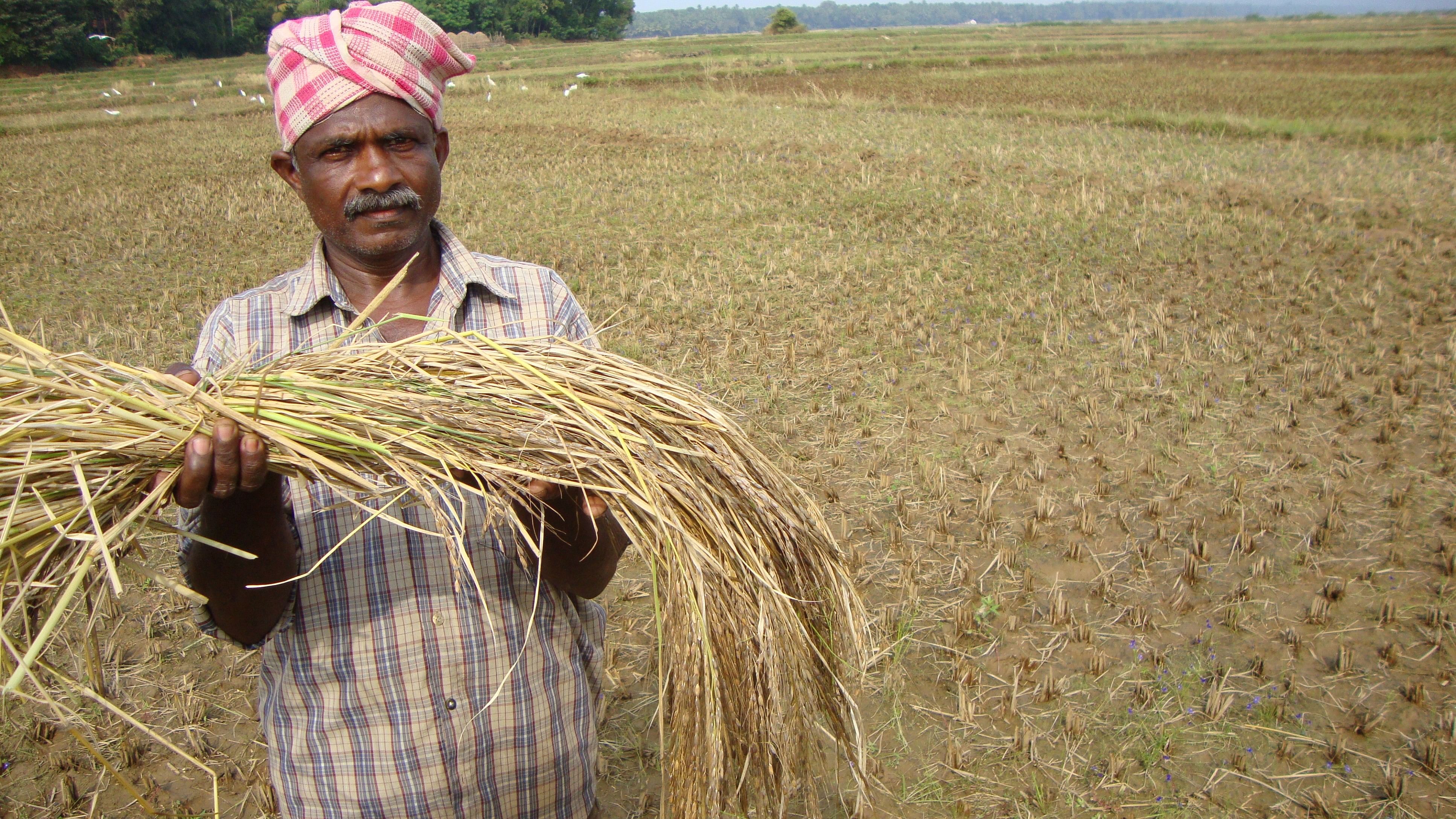
A farmer growing Kagga paddy in Kumta in Uttara Kannada district; A close-up view of Kagga paddy; Farmers working in the paddy fields.
Credit: DH Photo by M G Naik
One of the unique paddy varieties grown in Karnataka goes by the name of Kagga. It is cultivated in the saline soils of the Gajani area of the Aghanashini estuaries in Uttara Kannada district. However, the variety is fast losing its cultivation area.
Two decades ago, Kagga was cultivated on nearly 2,500 hectares of land on the backwaters of Aghanashini. However, this season, the paddy variety was cultivated on less than 300 acres of land. Kagga was once a staple food for the fisherfolk community in the region due to its nutritional value and health benefits.
The non-availability of seeds and natural vagaries are resulting in shrinking space for Kagga. In addition, farmers are reluctant to cultivate it due to the tedious processes involved.
Experts say conservation of this saline-resistant paddy variety is vital for food security in India, given that global warming is resulting in rising sea levels.
Nagaraj Naik, a progressive farmer from Kagal, says there is a huge demand for the Kagga variety of rice in bigger cities due to its medicinal value. However, there is a shortage of supply in the market as not many farmers are growing the variety, he adds.
Unpredictable rainfall
The erratic rainfall this season has compounded the woes of Kagga farmers, as excess sea water gushed into the fields during the seedling stage. This resulted in the complete destruction of the crop.
Shridhar Pai, secretary of the Manikatta Kagga Paddy Growers’ Association, says crops sown on nearly 20 acres of land were washed away after heavy rains and the flooding of fields with seawater. He adds that the farmers are left with no seeds for next year, as they had utilised the entire stock of 10 quintals to sow.
On the declining motivation to grow Kagga, Uttara Kannada Deputy Director of Agriculture Honnappa Gouda says: “Cultivation, harvesting and milling of the Kagga crop is a tedious process. So, the majority of farmers have discontinued cultivating it. Only a handful of farmers in three villages on the backwaters of River Aghanashini had taken up the cultivation of this paddy variety.”
He adds that untimely heavy rainfall in June and the sudden disappearance of the monsoon have meant that salinity in the Gajani land has increased, resulting in the complete failure of crops. The department has yet to conduct an overall survey of the crop loss.
Further, farmers are unlikely to be compensated for crop loss. Due to the absence of proper land title deeds indicating ownership, farmers of the region are involved in community farming. They share their profits on the basis of mutual understanding.
Efforts to review
Realising the importance of the salinity-resistant variety of paddy, the M S Swaminathan Research Foundation (MSSRF) set up village-based seed banks in 2007. While Kagga saw an initial revival, once the foundation stepped back, the rise was not sustained. And the production is witnessing a downward trend again.
MSSRF Executive Director G N Hariharan says the conservation of the Kagga variety is very important in times of climate change — for food security and the future cultivation of paddy. “Increase in sea levels due to global warming will result in more agricultural land coming under saline cultivation. Kagga, which is known for being resistant to salt water, can provide a solution for our future needs,” he says.
Hariharan adds that farmers need high-quality seeds for cultivation. “If the state government permits us to work with the farmers we will be able to revive the Kagga crop.”